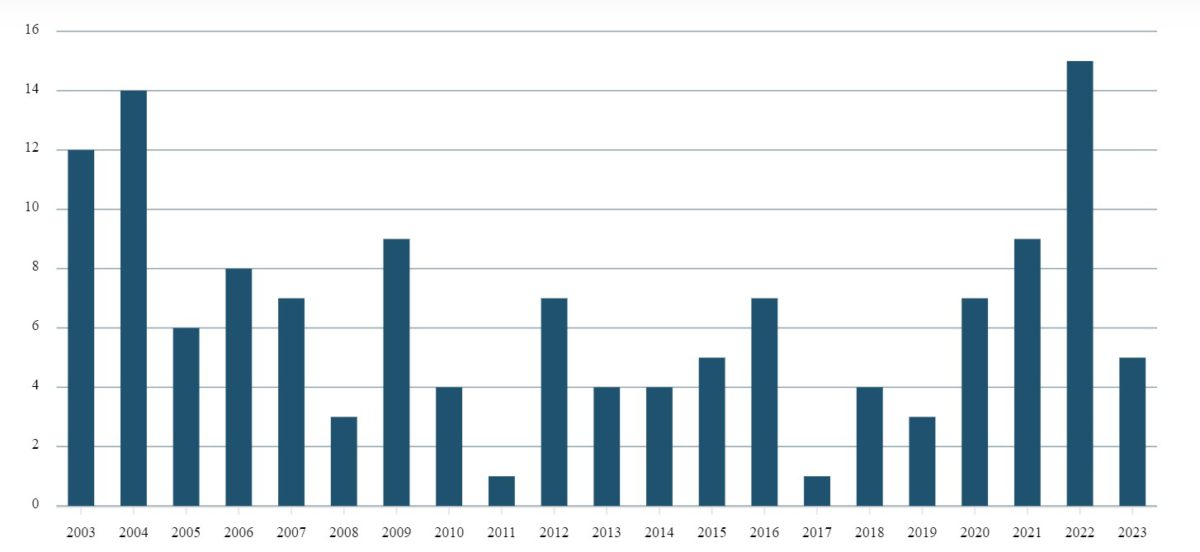Over half of all workplace fatalities in the last two years were in the construction sector, and all involved males, according to the latest data release by Malta’s National Statistics Office.
2022 was a particularly deadly year, seeing the highest number of workplace incidents resulting in death – 15 – since at least 2003, the earliest year for which data was provided.

The situation moderated in 2023, when only five persons died on the job – in line with the long-term average.
Of the 20 fatal incidents occurring between 2022 and 2023, 60 per cent involved Maltese nationals while the rest involved non-EU nationals. The Northern Harbour and Southern Harbour areas saw 11 deaths – over half of the total.
In the majority of cases, victims were either aged between 25 to 34 years or 55 years and over.
Enterprises employing 50 to 249 employees registered the highest number of fatalities at work. On the other hand, enterprises employing 250 to 499 employees did not register any fatalities at work.
Most fatalities at work (13 fatalities or 65 per cent of total fatalities) involved victims who were engaged in elementary occupations. Apart from construction, the wholesale and retail trade, transportation and storage, accommodation and food service activities sector registered the second highest number of deaths (six).
Agriculture, forestry and fishing, information and communication, and manufacturing, quarrying and other industry each had one person dying on the job over the last two years.
More than 90 per cent of all deaths were caused by head injuries. Regarding the type of injuries suffered by the victims, during 2022 and 2023, 18 fatalities at work involved concussions and internal injuries.
Two years since its birth, Moneybase features on Microsoft’s Customer Stories
Moneybase has now just been featured on Microsoft’s latest Customer Stories
Finance Minister confirms continuity of food and energy subsidies
Spending on food and energy subsidies as a percentage of the GDP will be at 0.7% in 2025
MHRA congratulates Glenn Micallef on EU role, highlights positive impact on Malta’s tourism and cultural sectors
The lobby group emphasised that Malta’s cultural assets and sports scene are key factors in attracting visitors and fostering economic ...






